Windows 10 Computer very slow after update? Here how to fix it
Windows 10 PC freezes and unresponsive after recent windows update, Want Windows 10 computer to run faster? Take a few minutes to try out these tips to speedup overall performance of your PC.

Sometimes you might notice Windows 10 Computer is so slow on Startup and everything, open any app or perform any task take a long time. Few users report, Installing recent Windows 10 updates seriously impacting the speed of PCs, Windows 10 computer freezes or slower to boot after recent windows update. There are various reasons why Windows 10 Very Slow And Unresponsive after an update. It’s possible that the update has damaged or corrupted certain system files, Viruses or malware infection, hardware conflicts, and outdated drivers, Running too many background programs and more.
Whatever the cause of the issue may be, here a few simple tips that can help restore performance, and speed up Windows 10 to run faster on older computers as well.
Pro Tip: If you’re still running an older mechanical hard drive, upgrading it to an SSD is the single most effective way to speed up your device.
How to speed up Windows 10
Microsoft regularly releases Windows updates with the latest patches that take care of the latest bugs plaguing the operating system. So lets first check if Microsoft has released a hotfix for the issue that caused Windows 10 slow after update.
- Open settings using Windows key + I,
- Click on update & security the Windows update,
- Next, you need to click on check for updates button to allow download and install latest windows updates from the Microsoft server (If available)
- Once done you need to restart your PC to apply the updates.
Again we recommend performing a full system scan with the latest updated antivirus / Antimalware software that helps if virus malware infection causing the issue. Well If you are unable to perform a System scan due to computer slow performance issue we recommend start windows safe mode and do feature process.
Also, you can run build-in antivirus from Start Menu > Settings > Update and Security > Windows Security than in the right-hand panel click Open Windows Security. Click “Virus & threat protection” then Press the “Quick scan” button and wait for the scan to complete.
Restore Corrupted Windows System Files
If Windows 10 freezes, Your PC experiences driver errors, blue or black screens, and other problems it may be because of corrupted Windows system files. Windows 10 comes with two major tools Deployment Image Service and Management Tool (DISM). and System File Checker (SFC) that helps with repair system image for corruption and restore missing corrupted windows system files instantly.
- Open the command prompt as administrator,
- Type command DISM /Online /Cleanup-Image /RestoreHealth and press the enter key,
- the DISM attempts to fix corrupted system files from Windows Update therefore internet access is required.
- Once the scanning process completes, next run system file checker command sfc /scannow and press the enter key,
- This will scan the system for corrupted missing system files if found any the utility restore them with correct ones,
- You only need to wait for 100% to complete the scanning process once done restart your PC.
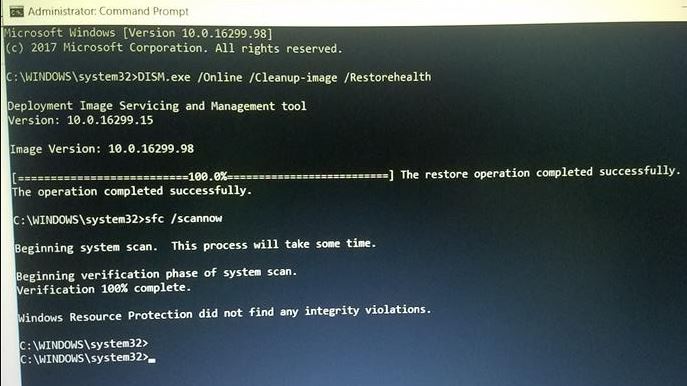
Update Driver and Software
Outdated driver or software can also cause the computer to run slowly such as faulty drivers stop Windows shutting down or cause it to start more slowly. Video card drivers are often updated to fix bugs and boost performance. Overall updating all outdated drivers and software probably help speed up the Windows 10 PC.
- Press Windows key + R, type devmgmt.msc and click ok,
- This will open the device manager and display all installed driver list,
- Here expand and right-click the driver (for example display driver) and select update driver,
- Click Search automatically for updated driver software and follow on-screen instructions to allow download the latest available driver from the Microsoft server.
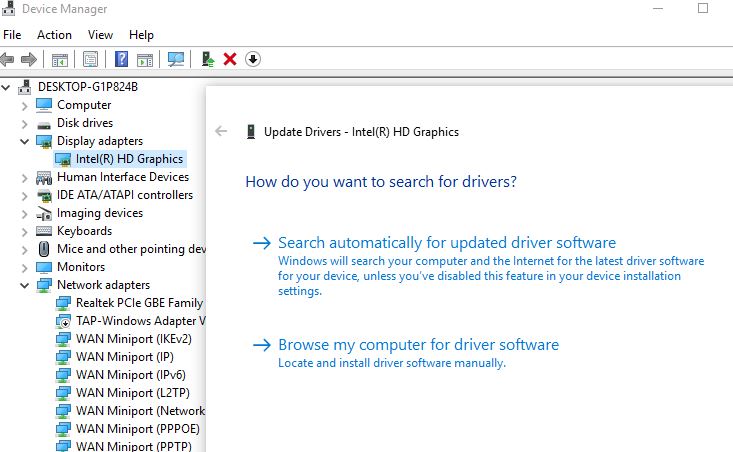
Also, to update the driver, go to the Microsoft official site or manufacturer official site to download the latest driver and install it.
To update software, you can also visit its official site to download the latest version and install it on your computer.
After all, steps are finished, reboot your computer and check whether the issue of the computer slows after the Windows update is fixed.
Disable programs that run on startup
Most of the time third-party programs lead to the computer running slow Windows 10. We recommend check and disable heavy performance processes, that programs that you rarely or never use.
Here how to Stop programs running on startup
- Right-click the taskbar and select Task Manager or hit Ctrl-Shift-Escape to launch
- Go to the Startup tab and sort the processes by their Startup impact rating.
- Then choose to disable the processes in the High category.
- Right-click the process and choose Disable.
Remember, you’re not disabling the program, just the fact that it runs on startup.
Check Fast startup option is enabled
With the latest Windows 10, Microsoft has added the Hybrid Startup and Shutdown feature that puts your computer into a hibernation state and improves the startup and shutdown process. So, in order to fix the issue of Windows 10 very slow startup, check and enable the Fast Startup option following the steps below.
- Open control panel,
- Choose System and Security then Power Options.
- On the left panel, click Choose what the power button does.
- In the pop-up window, click Change settings that are currently unavailable.
- Check the option Turn on fast startup (recommended) and save your changes.
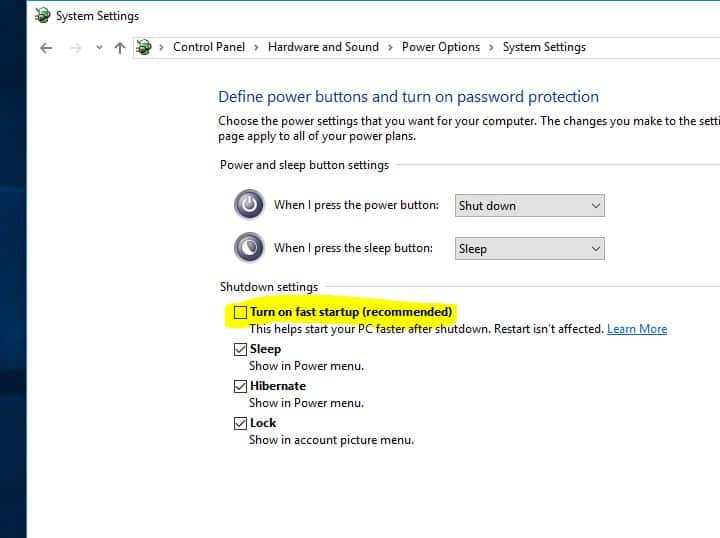
Adjust the amount of Virtual Memory Windows uses
Another quick fix for a PC that’s slowing down is allowing Windows to use more Virtual Memory. You only need to change the default settings for the Page File control in Windows 10 from System Managed to Manual format. It’s an easy and effective way to improve PC performance.
- Search for performance and from the results click on Adjust the appearance and performance of Windows.
- Go to the Advanced tab and click on Change in the Virtual Memory section.,
- Here untick the option “Automatically manage paging file size for all drives.”
- Now select the default C: drive where Windows 10 is installed and then choose Custom Size.
- Then change Initial Size and Maximum Size to the recommended values by Windows 10 (given below).
- Now click Set and then hit OK to save the settings.
- Reboot the computer for the changes to take effect and fix the slow performance issue in Windows 10.
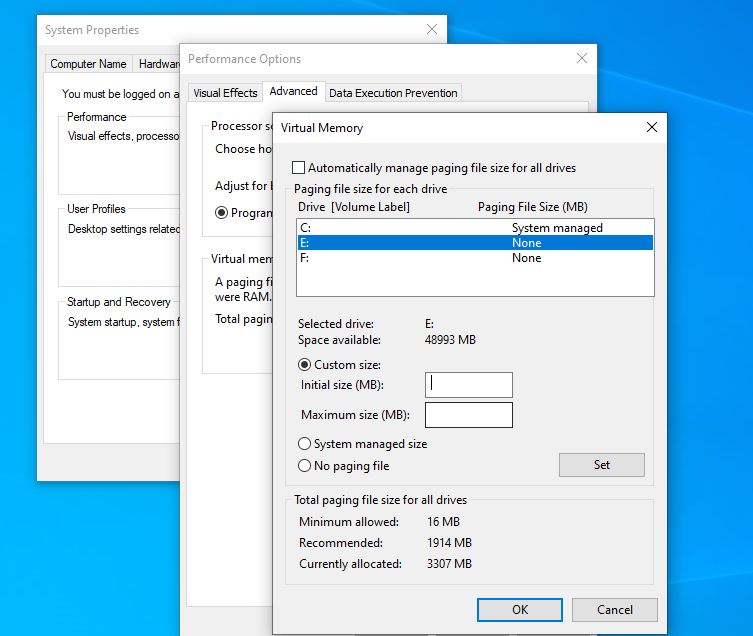
Turn off search indexing
Windows 10 indexes your hard disk in the background, allowing you to search your PC more quickly than if no indexing were being done. But slower PCs that use indexing can see a performance hit, and you can give them a speed boost by turning off indexing.
- Type services.msc in the Windows 10 search box and press Enter.
- The Services app appears. Scroll down to either Indexing Service or Windows Search in the list of services.
- Double-click it, and from the screen that appears, change startup type disable and click Stop, then reboot your machine.
- Your searches may be slightly slower, although you may not notice the difference. But you should get an overall performance boost.
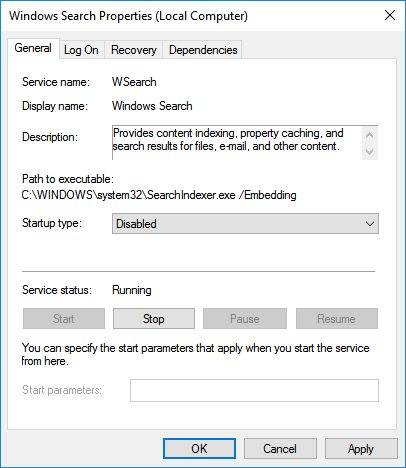
Upgrade your hardware
Still need help, its time to think about upgrading your hardware such as:
- Upgrading the graphics card is a great way to speed up games,
- if you have a small quantity of RAM then the processor will handle a limited number of tasks faster. But when you have a high amount of RAM, your processor will handle more tasks faster. So adding additional ram makes your computer faster.
- Again a solid-state disk drive (SSD) is the best way to boost performance in many older PCs and laptops.
That’s all, hope now you make your Windows 10 PC faster than before.
